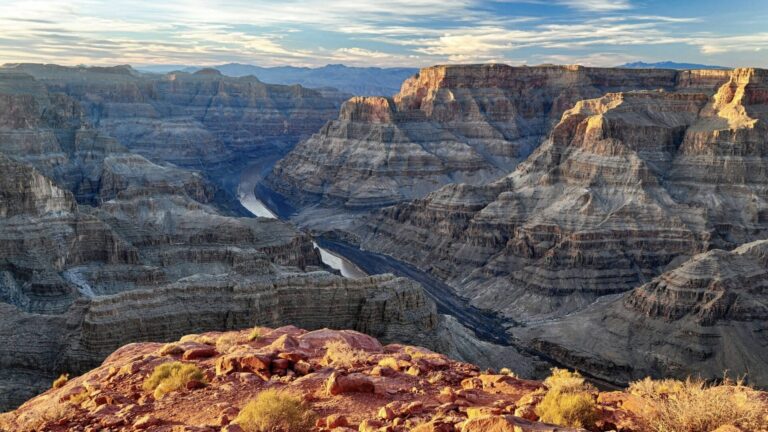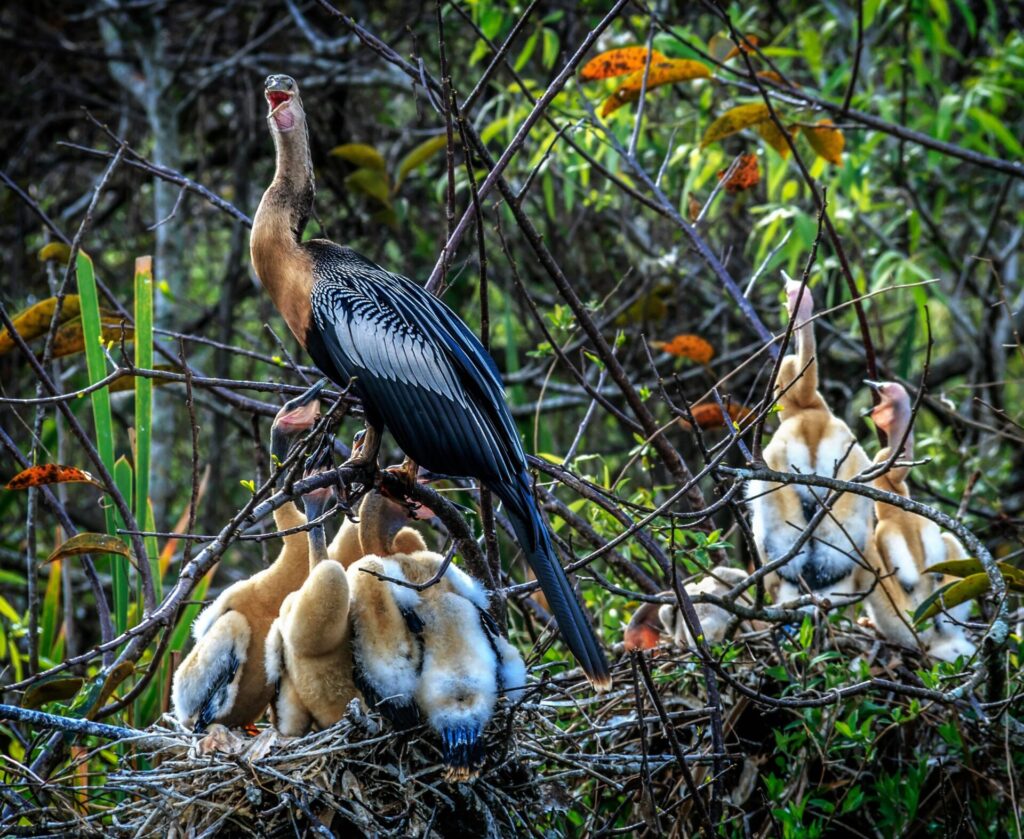
Spring break is the perfect time to hop in your RV and hit the road and national parks are the perfect destination. The best national parks for spring break? Those that offer plenty of warm, spring weather and sunshine, of course!
Here are our top 6 best national parks for spring break. These parks include great hiking, biking, and even swimming or wading across streams and rivers while exploring.
- Grand Canyon National Park
- Zion National Park
- Big Bend National Park
- Everglades National Park
- Great Smoky Mountains National Park
- Arches National Park
Grand Canyon National Park, AZ
Grand Canyon National Park is definitely one of the best national parks for spring break, and it has activities for all levels. The Rim Trail is relatively flat and allows you to walk as far as you wish along the top of the canyon, with various lookouts where you can take pictures and admire the view. Experienced hikers can also venture down part, or all, of various trails that lead to the bottom of the canyon including the steeper Kaibob Trail, or the longer but somewhat milder Bright Angel Trail.
Grand Canyon Village is the hub of the park, with places to eat, visitor centers, souvenir shops and bookstores, bicycle rentals, and more. Stop in at a visitor center to find out about ranger-led talks, hikes, and other activities planned by the park.
Spring Weather in Grand Canyon National Park
Spring at the Grand Canyon is a beautiful season! The weather can be a little chilly, especially after dark, with temperatures ranging from a high around 70 during the day (depending on how late in spring you visit) to the 40s at night.
Rent an RV near Grand Canyon National Park!
Zion National Park, UT
Zion National Park is another southwestern national park with pleasant days to hike, bike, rock climb, or wade through the river at the bottom of the canyon. In fact, one of the most well-known hikes at Utah’s first national park is a trek through The Narrows which involves a good amount of wading through the water.
There are a variety of hikes in the park besides The Narrows, and the National Park Service hosts nature talks, guided hikes, and other opportunities to learn more about the park, the rock formations, and the history of the area. You can also check out nearby petroglyphs, or visit the Zion Human History Museum to learn about the people who have inhabited the park and surrounding areas over the centuries.
Spring Weather in Zion National Park
A spring visit can be more pleasant than heading to Zion in summer, when temps can climb above 100°F, but spring can also be wet and chilly so be sure to check the weather. Temperatures can also fluctuate, so you may need both a short-sleeved shirt and a heavy coat all in one day.
Rent an RV near Zion National Park!
Big Bend National Park, TX
Big Bend National Park is another place you can safely assume you’ll spend a warm spring break. The West Texas park offers all kinds of opportunities to get outdoors and enjoy the springtime weather.
The park is near the Mexican border along the Rio Grande (a bend in the river gives the park its name). Along with the river where you can float, kayak, or enjoy other water sports, there are mountains, canyons, deserts, and even some hot springs.
Rangers lead many nature hikes, talks, and other educational opportunities, and Big Bend has the least amount of light pollution of any national park within the continental U.S. so be sure to rest up and spend some time stargazing at night.
Spring Weather in Big Bend National Park
Like Zion, the park can get hot in summer, so spring is a great time to visit although you’ll want to plan for both warm and chilly weather – often all on the same day. In March, the average high in Big Bend is 70 degrees. Meanwhile, the average low is 48 degrees.
Rent an RV near Big Bend National Park!

Everglades National Park, FL
Easily one of the best national parks for spring break, Everglades National Park in Florida offers some seriously cool experiences that you won’t soon forget.
Walk along the Anihinga trail to see some amazing birds as well as alligators basking in the sunlight, or choose to join the ranger led night walk along this same trail to try to catch some gator activity. Take the Shark Valley tram to see more gators and learn about this unique ecosystem. You might also choose to hop on an airboat tour to see even more of the park!
Spring Weather in Everglades National Park
As you might have guessed based on the location of this park, the springtime weather here is fantastic. Average temperatures in March range from 60-82 degrees, meaning you won’t need to worry about being cold. Instead, we recommend packing plenty of shorts, sunscreen, and bug spray.
Rent an RV near Everglades National Park!
Great Smoky Mountains National Park, TN
Spring in Great Smoky Mountains National Park is lovely! Wildflowers dot the mountains and wooded areas, and you may see shy spring wildlife – moms and babies – venturing out (be sure to keep your distance!).
The park encompasses parts of Tennessee and North Carolina and has entrances in both states. No matter which part of the park you visit, you’ll find ranger-led programs, talks, and hikes to help you understand the ecosystem and history of the area. You can also find plenty of outdoor activities to enjoy the spring weather, with hiking, biking, horseback riding, and fishing all as options.
Spring Weather in Smoky Mountains National Park
The mild spring weather is another thing that makes this one of the best national parks for spring break. Spring temperatures in the park range from 42-80°F. Your location inside the park can also determine the temperature, with mountaintops being much colder than the area at the base.
Rent an RV near Great Smoky Mountains National Park!
Arches National Park, UT
Arches National Parkis another popular Utah national park, and you could in fact combine this with a stay at Zion if you wanted to hit several parks in one road trip.
Visitors to the park can hike, go horseback riding, bike, or rock climb at various points throughout the park. If you are climbing or hiking, be sure to check with the visitor center to make sure your route is allowed – the delicate arches are protected so they can be preserved for future generations and there are rules about where visitors can walk. Rangers also lead talks, hikes, and other events to help you learn more.
Arches is also very close to the town of Moab, which makes a great base for exploring the park. Moab also offers nice options for eating and shopping for souvenirs and has many places to rent bicycles or other outdoor equipment, and book Jeep tours or climbing excursions.
Spring Weather in Arches National Park
Like other southwestern parks, spring is a great time to visit Arches, before the sweltering summer heat sets in. The high desert climate means you can see temperature changes of up to 40 degrees in one day, but spring is one of the best seasons to visit, with daytime temperatures averaging between 60-80°F.
Rent an RV near Arches National Park!
In our opinion, these are the 6 best national parks for spring break. That said, they are far from the only awesome national parks to visit during the spring time. For even more springtime fun, consider Joshua Tree National Park, Death Valley National Park, Bryce Canyon National Park, White Sands National Park, or Canyonlands National Park.

